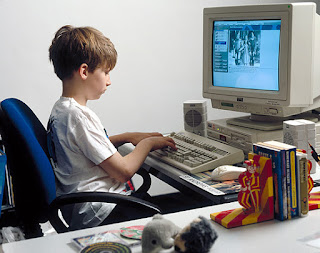Introduction To Computer
Today's computers Come in many different forms. They range
from massive, multipurpose mainframes and supercomputers to desktop-size
minicomputers, personal computers. Between these extremes is a vast middle
ground of arid. workstations. Large minicomputers approach mainframes in
computing power, whereas workstations are powerful personal computers.
Mainframes and large minicomputers are used by many
businesses, universities, hospitals and government agencies to carry out
sophisticated scientific and business calculations. These computers are
expensive (large computers can cost millions of dollars) and may require a
sizable staff of supporting personnel and a special, carefully controlled
environment.
• Personal computers,
on the other hand, are small and inexpensive. In fact, portable,
battery-powered "laptop" computers weighing less than 5 or 6 pounds
are now widely used by many students and traveling professionals. Personal
computers are used extensively in most schools and businesses and they are
rapidly becoming common household items. Most students use personal computers when
learning to program with C.
Figure 1.1 shows a student using a laptop computer.
Despite their small size and low cost, modern personal
computers approach minicomputers in computing power. They are now used for many
applications that formerly required larger, more expensive computers. Moreover,
their performance continues to improve dramatically as their cost continues to
drop. The design of a personal computer permits a high level of interaction
between the user and the computer. Most applications (e.g., word processors,
graphics programs, spreadsheets and database management programs) are
specifically designed to take advantage of this feature, thus providing the
skilled user with a wide variety of creative tools to write, draw or carry out
numerical computations. Applications involving high-resolution graphics are
particularly common.
• Many organizations connect personal computers to larger
computers or to other personal computers, thus permitting their use either as
stand-alone devices or as terminals within a computer network. Connections /.
over telephone lines are also common. When viewed in this context, we see that
personal computers often r complement, rather than replace, the use of larger
computers.
What is Computer
A computer is a device that accepts information (in the form
of digitized data) and manipulates it for some result based on a program or
sequence of instructions on how the data is to be processed. Computer is an
electronic device that is designed to work with Information. You may already
know that you can use a computer to type documents, send email, play games, and
browse the Web. You can also use it to edit or create spreadsheets,
presentations, and even videos. It represents the decimal numbers through a
string of binary digits. The Word 'Computer' usually refers to the Center
Processor Unit plus Internal memory.
Block diagram of computer
- Input Unit
- Central Processing Unit
(CPU)
i.
Memory Unit
ii.
Control Unit
iii.
Arithmetic and Logic Units
3. Output Unit









Great blogpost!
ReplyDeleteyeah Bro Thanks!
ReplyDelete